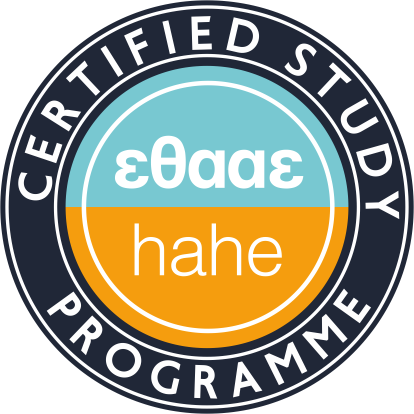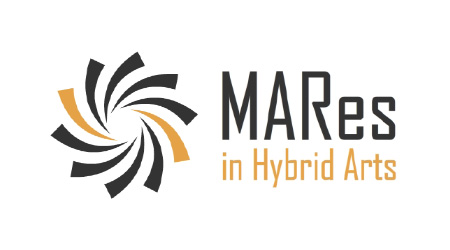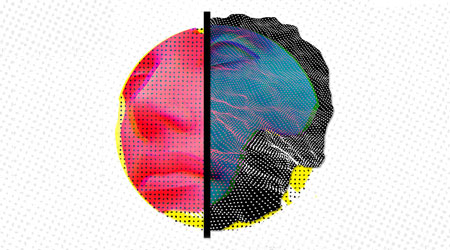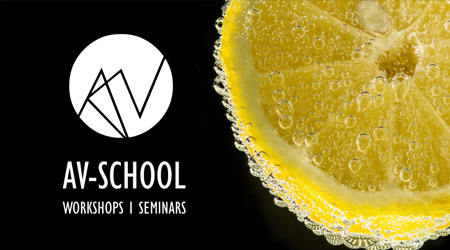Art and Education: Optical and Conceptual Structures
Teaching Staff: Papadopoulou Agnes, Panagopoulos Iakovos
Course Code: THE608
Course Category: Deepening Knowledge
Course Type: Elective
Course Level: Undergraduate
Course Language: Greek
Delivery method: Lectures
Semester: 6th
ECTS: 5
Teaching Units: 3
Teaching Hours: 3
Teaching Structure:
| Activity | Semester Workload |
|---|---|
| Lectures | 39 |
| Literature Study and Analysis | 48 |
| Practice and Preparation | 26 |
| Course Total (ECTS: 5) | 113 |
The aesthetic experience is mainly activating the reflective ability and imagination, decodes, reinterprets, restates, reprocesses and strengthens meanings, so it is an extremely importantsubject to be under research study, particularly important for cognitive development, documented by theoretical approaches and research in the Education area. The art exposure is fuctioning as a cultivating field for our way of thinking. The rupture depth, whichis introducedby the works of art on social conventions, alienating norms, stereotypical assumptions, creates a syllogism core which decisively contributes to cultivating creative criticism, liberalizing creativity, forming consciousness within institutional and personal conditions in the field of education. Dialectically, critically and versatile issues are considered, aiming at shaping thought on issues relating to culture, but also in relation to political, social, economic changes and circumstances. Attempts to analyze a process through which belief systems, desires, consumption of some style or ways of thinking, which promotes values, ideas, will not beeasily accepted without seeking information, causes and detailed findings with clarity, accuracy, appropriateness, consistency, rationality, impartiality and deepness.
Course Participants are expected to:
- understand that culture is a presumption of cognitive structure
- explore the deeper meaning, since critical thinking is not limited to obtaining declarative, proce-dural knowledge, but in action (thinking and analysis)
- understand visual, conceptual, textual structures
- distinguish "formations loaded with perceptual content", interpretation issues, meaning framing
- Be aware of basic socio-ideological and educational considerations that influence the concept of quality education, the formation of a quality culture
1st Week
Perceptual and aesthetic content: Cognitive development and research (eclecticism, axiom of multiplicity - aesthetic object - technical product)
2nd Week
Artistic form - scientific techniques - recreational practices - (recreational practices of the teen communities)
3rd Week
Conceptual researchon the aesthetic dimension of different cultures and societies
4th Week
Values in relation to correlations, comparisons, proportions -Is The role of art co-ordinating or coincidental?
5th Week
Past-Future Interface (manipulative mode, specific arguments, interpolateexcerpts, revivals, styles, trends or integrated mentalities)
6th Week
Partial and fragmentarySemiology or obsessive with the principle of reality
7th Week
Convergence of art and ontology - Embracing of symbolism processes
8th Week
Revocation and affirmation of object subject relationship in aesthetic experience - New Aesthetic
9th Week
Conversion of art, technique, imagination, logic, scientific, poetic thinking, aesthetic ethos, a particular ethical and political dimension that ιmposes the necessity of the sensual power of the beautiful and therefore of the liberation of man's creative instincts and impulses.
10th Week
Art and technology: Possibilities of form and matter - extended sensation
11th Week
Variations: theatrical, cinematographic, musical language etc.
12th Week
Media / Form, Style, Patterns, the necessity of selectivity - Participative Artwork
13th Week
Cognitive Games - Arts in Schools
Buck- Morss, S. (2011). Η διαλεκτική του βλέπειν. Ο Βάλτερ Μπένγιαμιν και το σχέδιο εργασίας περί στοών. Ηράκλειο: Πανεπιστημιακές Εκδόσεις Κρήτης.
Merlin, D. (2018). Η καταγωγή του σύγχρονου νου. Τρία στάδια στην εξέλιξη της κουλτούρας και της γνωσιακής λειτουργίας. Αθήνα: ΜΙΕΤ.
Χουλιαράκη, Λ. (2012). Το θέαμα της οδύνης. Ηράκλειο: Πανεπιστημιακές Εκδόσεις Κρήτης.
Hall, S. (2010). Αυτό σημαίνει αυτό, αυτό σημαίνει εκείνο. Αθήνα: Εκδόσεις Δίαυλος.
Lectures
Learning through Design
Projects
Study assignments and homework
Enhanced by multimedia content.
The learning process is supported by the asyncrhonous e-learning platform e-class.
Written examination + assignment grade point average
or Projects/Assignments as an evaluation method
Back
| << | < | December 2025 |
> | >> | ||
| Mo | Tu | We | Th | Fr | Sa | Su |
1 |
2 |
3 |
4 |
5 |
6 |
7 |
8 |
9 |
10 |
11 |
12 |
13 |
14 |
15 |
16 |
17 |
18 |
19 |
20 |
21 |
22 |
23 |
24 |
25 |
26 |
27 |
28 |
29 |
30 |
31 |
||||
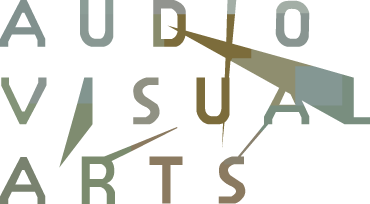


 Art and Education: Optical and Conceptual Structures
Art and Education: Optical and Conceptual Structures